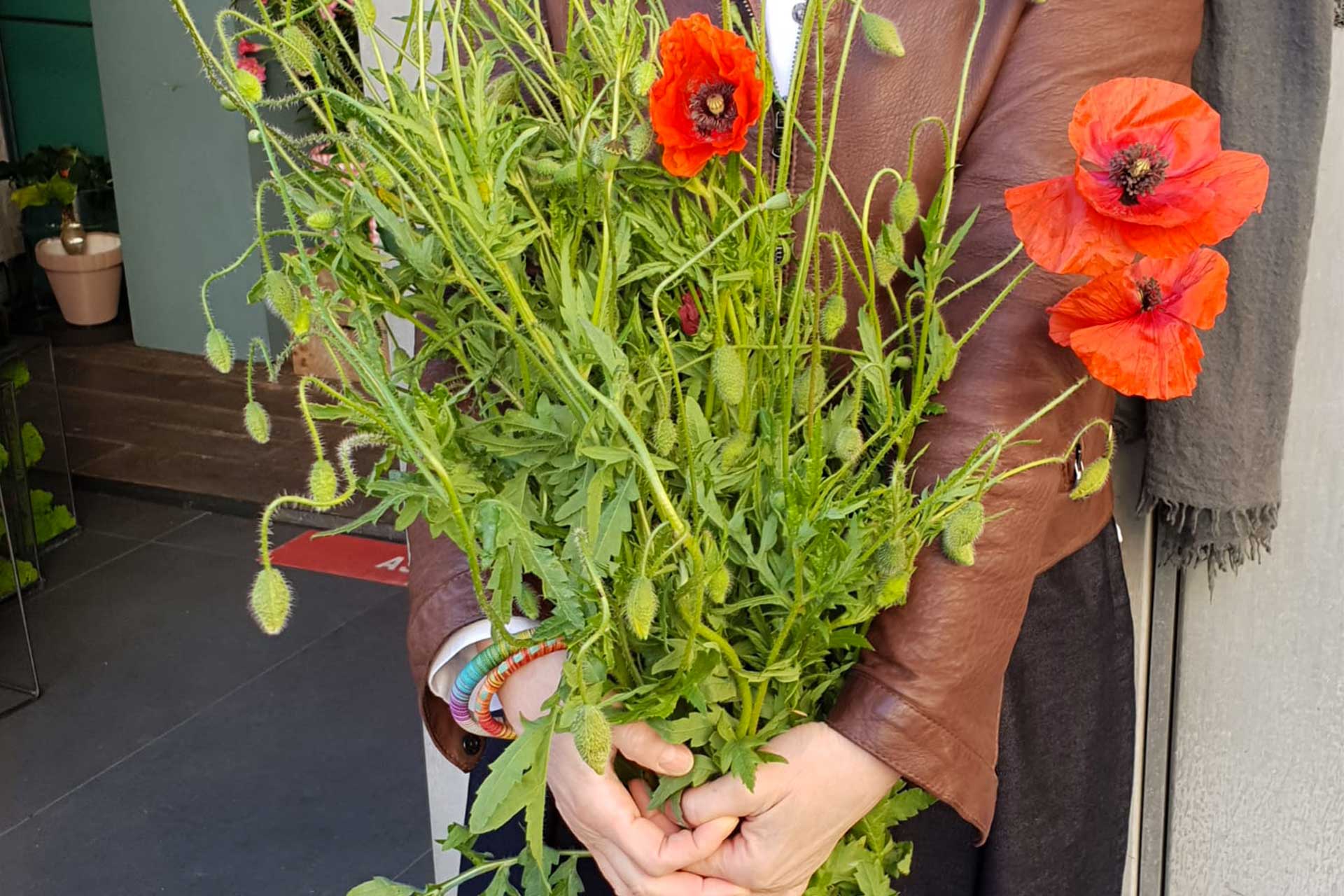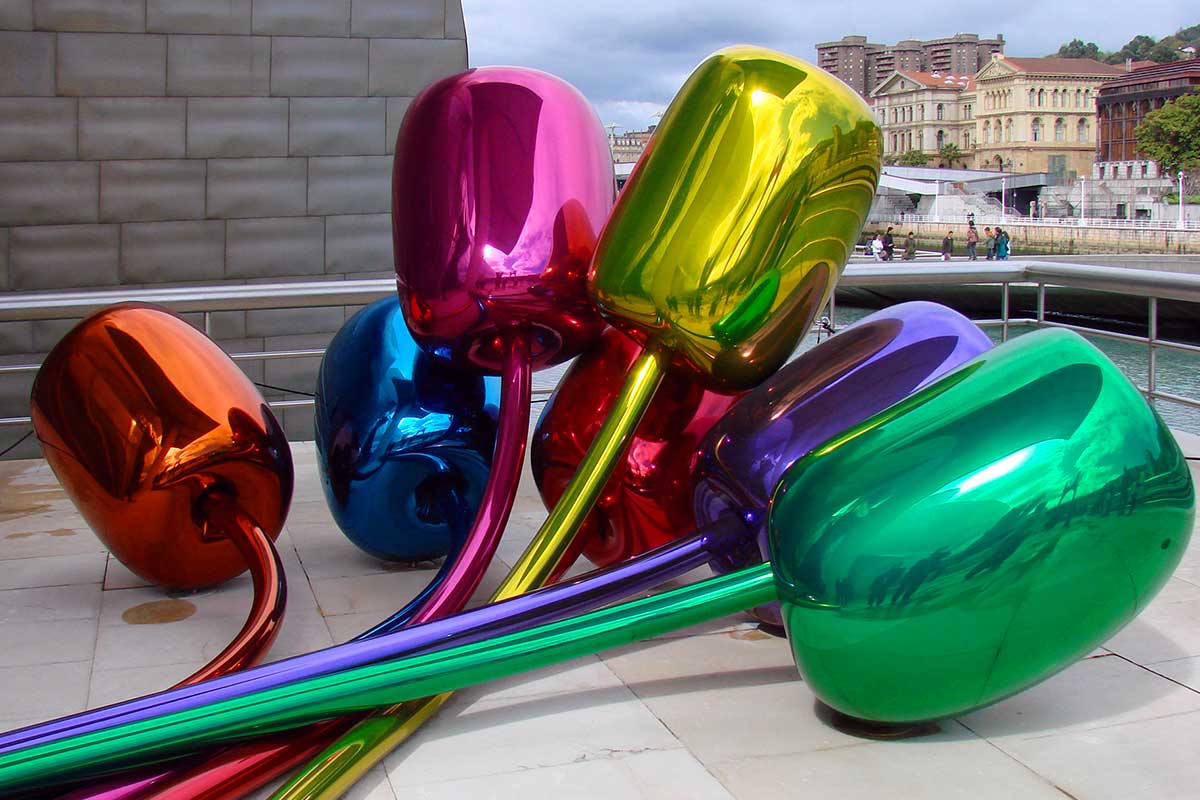«The event industry requires large quantities of the identical flowers, that only the Dutch market (which serves as a collector of crops from Colombia, South Africa, and Ecuador) can satisfy»
The flower industry: mass production
Flowers have become a part of a vast and profitable global industry estimated at $33 billion since the 19th century. Since the nineties, production has been shifting from Europe towards countries with better climatic conditions and lower labor costs such as Kenya, Ethiopia, Ecuador, and Colombia, which are now the world’s greatest producers of flowers. This mass production, and the issues related to shipping these flowers to Western countries, have become a severe environmental threat. From pesticides, lands stolen from the agro-alimentary industry, intense irrigation and refrigerated containers, the cut flower industry has a significant impact on the environment which is far from sustainable.
The slow flower movement
The concern regarding pollution caused by the cut flower industry inspired Slow Flower, a movement which encourages using locally grown flowers. Similar to what happened with the Slow Food movement, Slow Flower predicates growing crops in a specific way without using harmful pesticides. «Slow Flower movement is a step forward for the flower industry, but it takes time to make a change», explains Claudia Tinor Centi, flower designer at Hanami Atelier. «The majority of producers are still very small and cannot meet the demand of the market, most of the time». Based on principles described in the 2013 Debra Prinzing book, Slow Flowers, the movement encourages choosing what is local and in season rather than buying flowers imported from other countries or flowers grown with chemicals and pesticides. Also, the Slow Flowers movement is part of the effort to establish a philosophy of applying sustainable practices, supporting the local economy, and reducing chemical use by purchasing locally and responsibly-grown flowers.
When asked about the most challenging thing when it comes to using local and responsibly grown cut flowers, Tinor Centi explains: «As a flower designer, I work mostly with big events, in addition to customers in my Atelier; and it is especially the event field that requires large quantities of the identical flowers, which only the Dutch market (which serves as a collector of crops from all over Europe, South Africa, and Ecuador) can satisfy, at the moment». The demand for vast quantities of perfect, identical flowers shifts the market from the local producers to countries that can meet that need, the same countries in which crops are intensively grown.
The environmental pollution of the flower industry
The largest producers of cut flowers globally are Colombia, Ecuador, Sri Lanka, Kenya and China. The warm and humid climates of these regions and their cheaper labor, contribute to their dominance in the global flower market but with a high cost in terms of sustainability and environmental pollution. Fresh-cut flowers are, in fact, treated with synthetic pesticides like glyphosate that pollute water flows and land. Flora and fauna contribute to the concerning decline of pollinator species, like bees. They are also harmful to human health where glyphosate is known for its carcinogenic effects.
The neurological effects of pesticides in humans and animals
While there are strict rules for using synthetic pesticides on edible crops and for the agro-alimentary industry, the flower market can skip these constraints since its products are not classified as food. For example, methyl bromide—a highly effective gas fumigant—has been used in floriculture to eliminate pests like rodents, insects, and fungi. However, it is highly toxic, and long-term exposure can result in neurological effects in humans and animals. In addition to this already concerning scenario, flowers are thirsty plants and need intensive irrigation, contributing to high water use and chemical runoff. For example, the drought-stricken Lake Naivasha in the center of Kenya, has seen half of its water drawn off for use in flower greenhouses, impacting the environment and other industries in the area.
Another concern is in regard to workers’ conditions. Floriculture workers are constantly exposed to toxins in fertilizers and pesticides and preservatives used to extend the life of blooms. Also, these harmful substances contaminate water streams and soil, entering the food chain and causing significant harm to the local communities living close to floriculture greenhouses. In addition to toxin exposure, workdays can be sixteen hours, with double shifts in the run-up to busy periods such as Valentine’s Day and Mother’s Day. Carpal tunnel syndrome, tendonitis, and other repetitive injuries are also common among flower workers.
Carbon emissions generated by flowers
On top of pesticides, water use, and workforce concerns, flowers can generate severe carbon emissions because of refrigeration and long-haul transport. As previously mentioned, more than half of the flowers sold in Western countries come from Latin America and Africa, with Colombia among the top producers. Here, farms are located near Bogotá’s International Airport where crops are grown in high-altitude and in industrial-scale greenhouses that exceed 500 acres. From here, stems can be transported up to 6,000 miles in refrigerated airplanes.
Ideally, this would take only five days from the field to the vase, resulting in excess carbon emissions that contribute to the climate crisis. Fresh-cut flowers must be refrigerated to prevent wilting which is why they are stored in a refrigerated warehouse before being transported in a plane; afterward, they are sent to another refrigerated warehouse where they wait to be bought, usually by Amsterdam auction houses. The main issue with refrigerated containment systems is that they emit hydrofluorocarbons, which are greenhouse gases estimated to be 9000 times more harmful than CO2 for the atmosphere.
The main problem within the cut flower industry is that customers demand fresh, identical flowers, usually in large quantities, and this mostly happens with events that require floral settings; «Although we would love to, we cannot rely solely on small Italian producers, who responsibly grow crops. Customers still need time to understand the difference between a flower grown in a greenhouse and a flower cultivated with more traditional and sustainable methods», states Tinor Centi. «Exactly as it happens with fruits and vegetables, local flowers from local producers that do not practice intensive cultivation will not be all identical and perfect as the ones that are grown in greenhouses, but we want to educate and show how that diversity can make them more interesting».
Perks and constraints of using locally sourced flowers
When asked about her experience with events which demand for large quantities of perfect and identical flowers, Tinor Centi explains that many big players are shifting towards more responsible choices. «We’re noticing a growing awareness in terms of sustainably sourced flowers, both with branded and private events; we created a floral set in Capri for a luxury fashion brand who only wanted local flowers. Of course, it was more complicated than ordering flowers from the Netherlands, but the result was perfect, and this influenced many people to make the same choice afterward». She continues: «With flowers, as in other industries, it’s all about trends. If we can make sustainable flowers ‘trendy’, more people will ask for them, and we will be able to make a change and stop these polluting and harmful processes».
One of the main constraints of using locally sourced flowers, for both major and minor events, however, are the small producers themselves: «Producers who adhere to the Slow Flower movement most of the time cater directly to retail, cutting out the figure of the flower designers», claims Tinor Centi. «We all need to make changes in the way we work with floral scenes; we need to start to appreciate the diversity. As a flower designer, I have always tried to propose less set compositions, preferring to work with flowers and foliage that come from sustainable cultivation. We need to change the way of composing, and therefore the taste in floral for big events. Otherwise, flower stores will continue to buy on the international market, and small flower producers will keep selling only to private customers».
Claudia Tinor Centi
Flower designer and owner of Hanami Atelier. She mainly works creating floral sets for ceremonies and events for important brands in the luxury and hotellerie fields, on top of running her Atelier in Italy. Since 2010 Claudia Tinor Centi believes in the importance of locally and ethically grown flowers and educates about Slow Floral principles, also cultivating part of the crops herself.




















